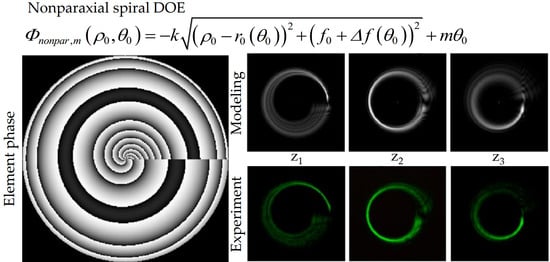Spiral Caustics of Vortex Beams
Abstract
:1. Introduction
2. Electromagnetic Field on a Curved Surface
2.1. Coordinate Systems
2.2. An Incident Wave in the Coordinates
2.3. Computation of the Field: General Case
3. Computing the Field in the Neighborhood of a Spiral Caustic Surface
3.1. Asymptotic Relations for the Diffraction Integral in the Neighborhood of a Spiral Caustic
3.2. An Analytical Solution for an Annular Caustic
4. Designing DOEs to Generate Spiral Caustics
5. Results of the Numerical Simulation and the Experiment
6. Conclusions
Author Contributions
Funding
Conflicts of Interest
References
- Kravtsov, Y.A.; Orlov, Y.I. Geometrical Optics of Inhomogeneous Media; Springer: Berlin/Heidelberg, Germany, 1990; ISBN 978-3-642-84033-3. [Google Scholar]
- Born, M.; Wolf, E. Principles of Optics. Electromagnetic Theory of Propagation, Interference and Diffraction of Light, 6th ed.; Pergamon Press: Oxford, UK, 1980; ISBN 0-08-026482-4. [Google Scholar]
- Arnol’d, V.I. Singularities of smooth mappings. Russ. Math. Surv. 1968, 23, 1–43. (In Russian) [Google Scholar] [CrossRef]
- Poston, T.; Stewart, I. Catastrophe Theory and Its Applications; Dover Publication, Inc.: Mineola, NY, USA, 1978; ISBN 0-486-69271-X. [Google Scholar]
- Gilmore, R. Catastrophe Theory for Scientists and Engineers; Dover: New York, NY, USA, 1993; ISBN 978-0-486-67539-8. [Google Scholar]
- Babich, V.M.; Buldyrev, V.S. Asymptotic Methods for Short Wave Diffraction Problems; Nauka Publisher: Moscow, Russia, 1972. (In Russian) [Google Scholar]
- James, G.L. Geometrical Theory of Diffraction for Electromagnetic Waves, 3rd ed.; Peter Peregrinus Ltd.: London, UK, 1986; ISBN 978-0-86341-062-8. [Google Scholar]
- Vainberg, B.R. Asymptotic Methods in Equations of Mathematical Physics; Gordon and Breach Science Publishers: New York, NY, USA, 1989; ISBN 2-88124-664-8. [Google Scholar]
- Maslov, V.P. Perturbation Theory and Asymptotic Methods; MGU Publisher: Moscow, Russia, 1965. (In Russian) [Google Scholar]
- Maslov, V.P. Operator Methods; Nauka Publisher: Moscow, Russia, 1973. (In Russian) [Google Scholar]
- Soifer, V.A.; Kharitonov, S.I.; Khonina, S.N.; Volotovsky, S.G. Caustics of vortex optical beams. Dokl. Phys. 2019, 64, 276–279. [Google Scholar] [CrossRef]
- Abramochkin, E.G.; Volostnikov, V.G. Spiral-type beams: Optical and quantum aspects. Opt. Commun. 1996, 125, 302–323. [Google Scholar] [CrossRef]
- Abramochkin, E.G.; Volostnikov, V.G. Spiral light beams. Phys. Usp. 2004, 47, 1177–1203. [Google Scholar] [CrossRef]
- Khonina, S.N.; Koltyar, V.V.; Soifer, V.A. Techniques for encoding composite diffractive optical elements. Proc. SPIE 2003, 5036, 493–498. [Google Scholar] [CrossRef]
- Kotlyar, V.V.; Khonina, S.N.; Soifer, V.A. Iterative calculation of diffractive optical elements focusing into a three dimensional domain and the surface of the body of rotation. J. Mod. Opt. 1996, 43, 1509–1524. [Google Scholar] [CrossRef]
- Rodrigo, J.A.; Alieva, T.; Abramochkin, E.; Castro, I. Shaping of light beams along curves in three dimensions. Opt. Express 2013, 21, 20544–20555. [Google Scholar] [CrossRef] [Green Version]
- Rodrigo, J.A.; Alieva, T. Polymorphic beams and nature inspired circuits for optical current. Sci. Rep. 2016, 6, 35341. [Google Scholar] [CrossRef] [Green Version]
- Alonzo, C.A.; Rodrigo, P.J.; Glückstad, J. Helico-conical optical beams: A product of helical and conical phase fronts. Opt. Express 2005, 13, 1749–1760. [Google Scholar] [CrossRef] [Green Version]
- Yang, D.; Li, Y.; Deng, D.; Chen, Q.; Zhang, Y.; Liu, Y.; Gao, J.; Sun, M. Chiral optical field generated by an annular subzone vortex phase plate. Opt. Lett. 2018, 43, 4594–4597. [Google Scholar] [CrossRef]
- Degtyarev, S.A.; Porfirev, A.P.; Khonina, S.N. Photonic nanohelix generated by a binary spiral axicon. Appl. Opt. 2016, 55, B44–B48. [Google Scholar] [CrossRef] [PubMed]
- Khonina, S.N.; Krasnov, S.V.; Ustinov, A.V.; Degtyarev, S.A.; Porfirev, A.P.; Kuchmizhak, A.; Kudryashov, S.I. Refractive twisted microaxicons. Opt. Lett. 2020, 45, 1334–1337. [Google Scholar] [CrossRef]
- Luo, W.; Cheng, S.; Yuan, Z.; Tao, S. Power-exponent-phase vortices for manipulating particles. Acta Opt. Sin. 2014, 34, 93–97. [Google Scholar] [CrossRef]
- Lao, G.; Zhang, Z.; Zhao, D. Propagation of the power-exponent-phase vortex beam in paraxial ABCD system. Opt. Express 2016, 24, 18082. [Google Scholar] [CrossRef] [PubMed]
- Khonina, S.N.; Ustinov, A.V.; Logachev, V.I.; Porfirev, A.P. Properties of vortex light fields generated by generalized spiral phase plates. Phys. Rev. A 2020, 101, 043829. [Google Scholar] [CrossRef]
- Grier, D.G. A revolution in optical manipulation. Nature 2003, 424, 810–816. [Google Scholar] [CrossRef]
- Soifer, V.A.; Kotlyar, V.V.; Khonina, S.N. Optical microparticle manipulation: Advances and new possibilities created by diffractive optics. Phys. Part. Nucl. 2004, 35, 733–766. [Google Scholar]
- Dholakia, K.; Cizmar, T. Shaping the future of manipulation. Nat. Photonics 2011, 5, 335–342. [Google Scholar] [CrossRef]
- Litchinitser, N.M. Structured light meets structured matter. Science 2012, 337, 1054–1055. [Google Scholar] [CrossRef]
- Rodrigo, J.A.; Alieva, T. Freestyle 3D laser traps: Tools for studying light-driven particle dynamics and beyond. Optica 2015, 2, 812–815. [Google Scholar] [CrossRef]
- Rubinsztein-Dunlop, H.; Forbes, A.; Berry, M.; Dennis, M.; Andrews, D.L.; Mansuripur, M.; Denz, C.; Alpmann, C.; Banzer, P.; Bauer, T.; et al. Roadmap on structured light. J. Opt. 2017, 19, 013001. [Google Scholar] [CrossRef]
- Shen, Y.; Wang, X.; Xie, Z.; Min, C.; Fu, X.; Liu, Q.; Gong, M.; Yuan, X. Optical vortices 30 years on: OAM manipulation from topological charge to multiple singularities. Light Sci. Appl. 2018, 8, 90. [Google Scholar] [CrossRef] [PubMed] [Green Version]
- Khonina, S.N.; Kazanskiy, N.L.; Karpeev, S.V.; Butt, M.A. Bessel beam: Significance and applications—A progressive review. Micromachines 2020, 11, 997. [Google Scholar] [CrossRef] [PubMed]
- Brebbia, C.A. The Boundary Element Method for Engineers, 2nd ed.; Pentech Press: London, UK, 1980; ISBN 978-0727302052. [Google Scholar]
- Barton, J.P. Electromagnetic field calculations for an irregularly shaped, nearspheroidal particle with arbitrary illumination. J. Opt. Soc. Am. 2002, 19, 2429–2435. [Google Scholar] [CrossRef] [PubMed]
- Soifer, V.A. (Ed.) Methods for Computer Design of Diffractive Optical Elements; John Willey and Sons: New York, NY, USA, 2002; ISBN 978-0-471-09533-0. [Google Scholar]
- Zhang, K.; Li, D. Electromagnetic Theory for Microwaves and Optoelectronics; Springer Science & Business Media: Berlin, Germany, 2007; ISBN 978-3-540-74295-1. [Google Scholar]
- Peng, Z.; Lim, K.; Lee, J. A boundary integral equation domain decomposition method for electromagnetic scattering from large and deep cavities. J. Comput. Phys. 2015, 280, 626–642. [Google Scholar] [CrossRef]
- Syubaev, S.; Zhizhchenko, A.; Vitrik, O.; Porfirev, A.; Fomchenkov, S.; Khonina, S.; Kudryashov, S.; Kuchmizhak, A. Chirality of laser-printed plasmonic nanoneedles tunable by tailoring spiral shape pulses. Appl. Surf. Sci. 2019, 470, 526–534. [Google Scholar] [CrossRef]
- Soskin, M.S.; Vasnetsov, M.V. Singular optics. Prog. Opt. 2001, 42, 219–276. [Google Scholar] [CrossRef]
- Dennis, M.R.; O’Holleran, K.; Padgett, M.J. Singular optics: Optical vortices and polarization singularities. Prog. Opt. 2009, 53, 293–364. [Google Scholar] [CrossRef]
- Kharitonov, S.I.; Volotovsky, S.G.; Khonina, S.N.; Kazanskiy, N.L. Diffraction catastrophes and asymptotic analysis of caustics from axisymmetric optical elements. Proc. SPIE 2019, 11146, 111460K. [Google Scholar] [CrossRef]
- Golub, M.A.; Kazanskiy, N.L.; Sisakyan, I.N.; Soifer, V.A.; Kharitonov, S.I. Diffraction calculation for an optical element which focuses into a ring. Optoelectron. Instrum. Data Process. 1987, 23, 7–14. [Google Scholar]
- Berry, M.V. Optical vortices evolving from helicoidal integer and fractional phase steps. J. Opt. A 2004, 6, 259–268. [Google Scholar] [CrossRef]
- Ostrovsky, A.S.; Rickenstorff-Parrao, C.; Arrizón, V. Generation of the “perfect” optical vortex using a liquid-crystal spatial light modulator. Opt. Lett. 2013, 38, 534–536. [Google Scholar] [CrossRef]
- Chen, M.; Mazilu, M.; Arita, Y.; Wright, E.M.; Dholakia, K. Dynamics of micro particles trapped in a perfect vortex beam. Opt. Lett. 2013, 38, 4919–4922. [Google Scholar] [CrossRef] [PubMed]
- Pinnell, J.; Rodríguez-Fajardo, V.; Forbes, A. How perfect are perfect vortex beams? Opt. Lett. 2019, 44, 5614–5617. [Google Scholar] [CrossRef] [PubMed]
- Qiao, Z.; Xie, G.; Wu, Y.; Yuan, P.; Ma, J.; Qian, L.; Fan, D. Generating high-charge optical vortices directly from laser up to 288th order. Laser Photonics Rev. 2018, 12, 1800019. [Google Scholar] [CrossRef] [Green Version]
- Lawrence, N.; Trevino, J.; Negro, L.D. Control of optical orbital angular momentum by Vogel spiral arrays of metallic nanoparticles. Opt. Lett. 2012, 37, 5076–5078. [Google Scholar] [CrossRef]
- Negro, L.D.; Wang, R.; Pinheiro, F.A. Structural and spectral properties of deterministic aperiodic optical structures. Crystals 2016, 6, 161. [Google Scholar] [CrossRef] [Green Version]
- Khonina, S.N.; Kotlyar, V.V.; Soifer, V.A.; Pääkkönen, P.; Simonen, J.; Turunen, J. An analysis of the angular momentum of a light field in terms of angular harmonics. J. Mod. Opt. 2001, 48, 1543–1557. [Google Scholar] [CrossRef]
- Ni, B.; Guo, L.; Yue, C.; Tang, Z. A novel measuring method for arbitrary optical vortex by three spiral spectra. Phys. Lett. A 2017, 381, 817–820. [Google Scholar] [CrossRef]
- Khonina, S.N.; Podlipnov, V.V.; Karpeev, S.V.; Ustinov, A.V.; Volotovsky, S.G.; Ganchevskaya, S.V. Spectral control of the orbital angular momentum of a laser beam based on 3D properties of spiral phase plates fabricated for an infrared wavelength. Opt. Express 2020, 28, 18407–18417. [Google Scholar] [CrossRef]
- Bliokh, K.Y.; Alonso, M.A.; Ostrovskaya, E.A.; Aiello, A. Angular momenta and spin–orbit interaction of non-paraxial light in free space. Phys. Rev. A 2010, 82, 063825. [Google Scholar] [CrossRef] [Green Version]
- Angelsky, O.V.; Bekshaev, A.Y.; Maksimyak, P.P.; Maksimyak, A.P.; Mokhun, I.I.; Hanson, S.G.; Zenkova, C.Y.; Tyurin, A.V. Circular motion of particles suspended in a Gaussian beam with circular polarization validates the spin part of the internal energy flow. Opt. Express 2012, 20, 11351–11356. [Google Scholar] [CrossRef] [PubMed] [Green Version]
- Marrucci, L.; Manzo, C.; Paparo, D. Optical spin-to-orbital angular momentum conversion in inhomogeneous anisotropic media. Phys. Rev. Lett. 2006, 96, 163905. [Google Scholar] [CrossRef] [PubMed] [Green Version]
- Zhao, Y.; Edgar, J.S.; Jeffries, G.D.M.; McGloin, D.; Chiu, D.T. Spin-to-orbital angular momentum conversion in a strongly focused optical beam. Phys. Rev. Lett. 2007, 99, 073901. [Google Scholar] [CrossRef] [PubMed]
- Bliokh, K.Y.; Rodriguez-Fortuno, F.; Nori, F.; Zayats, A.V. Spin-orbit interactions of light. Nat. Photonics 2015, 9, 796–808. [Google Scholar] [CrossRef]
- Khonina, S.N.; Karpeev, S.V.; Paranin, V.D.; Morozov, A.A. Polarization conversion under focusing of vortex laser beams along the axis of anisotropic crystals. Phys. Lett. A 2017, 381, 2444–2455. [Google Scholar] [CrossRef]
- Balalaev, S.A.; Khonina, S.N. Realisation of fast algorithm of Kirchhoff’s diffraction integral on an example of Bessel modes. Comput. Opt. 2006, 30, 69–73. [Google Scholar]
- Khonina, S.N.; Ustinov, A.V.; Kovalyov, A.A.; Volotovsky, S.G. Near-field propagation of vortex beams: Models and computation algorithms. Opt. Mem. Neural Netw. 2014, 23, 50–73. [Google Scholar] [CrossRef]
- Golub, M.A.; Doskolovich, L.L.; Kazanskiy, N.L.; Kharitonov, S.I.; Sisakian, I.N.; Soifer, V.A. Focusators at letters diffraction design. Proc SPIE 1991, 1500, 211–221. [Google Scholar] [CrossRef]
- Khonina, S.N.; Kotlyar, V.V.; Lushpin, V.V.; Soifer, V.A. A method for design of composite DOEs for the generation of letter image. Opt. Mem. Neural Netw. 1997, 6, 213–220. [Google Scholar]



| Optical Element Phase λ = 532 nm, f1 = f0 = 100 mm, r0 = 1 mm, r1 = 1.25 mm | Intensity Distribution, x, y ∈ [−1.5 mm, 1.5 mm] | |||
|---|---|---|---|---|
| z = 100 mm Modeling | |E(u,v)|2 | |||
| z = 80 mm | z = 100 mm | z = 120 mm | ||
| Rd = 1.5 mm | |Ex(u,v)|2 | modeling | ||
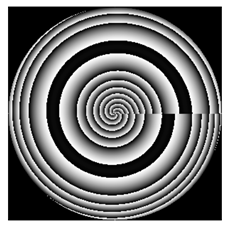 |  |  |  | 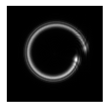 |
| |Ez(u,v)|2 | experimental | |||
 |  |  |  | |
| Rd = 0.7 mm | |Ex(u,v)|2 | modeling | ||
 |  | 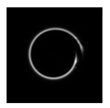 | 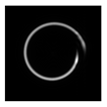 | 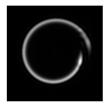 |
| |Ez(u,v)|2 | experimental | |||
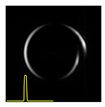 | 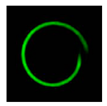 | 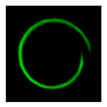 | 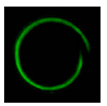 | |
| Calculation Parameters λ = 532 nm, f1 = f0 = 100 mm | Calculation Method | Intensity Distribution of the Electric Field Components in the Plane z = 100 mm | |
|---|---|---|---|
| |Ex(u,v)|2 | |Ez(u,v)|2 | ||
Input field: Rd = 1.5 mm Output field: r0 = 1 mm, r1 = 1.25 mm, x, y ∈ [−1.5 mm, 1.5 mm] | Direct integration (30)–(31) |  |  |
| Asymptotic (39)–(40) |  | 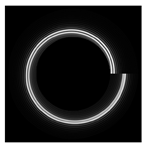 | |
Input field: Rd = 1.0 mm Output field: r0 = 2 mm, r1 = 2.5 mm, x, y ∈ [−3 mm, 3 mm] | Direct integration (30)–(31) | 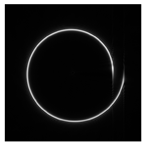 |  |
| Asymptotic (39)–(40) |  | 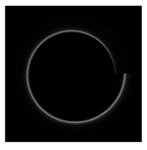 | |
| Parameters λ = 532 nm, f1 = f0 = 100 mm | Optical Element Phase | Intensity Distribution of the Electric Field Components in the Plane z = 100 mm | ||
|---|---|---|---|---|
| Modeling |Ex(u,v)|2 | Modeling |Ez(u,v)|2 | Experimental |E(u,v)|2 | ||
| Rd = 1.5 mm, r0 = 1 mm, r1 = 1.25 mm, r2 = 1.5 mm | Sectorial | |||
 |  | 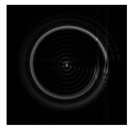 | 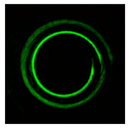 | |
| Compositional | ||||
 | 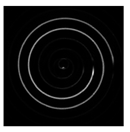 |  |  | |
| Rd = 1.5 mm, r0 = 2 mm, r1 = 2.5 mm, r2 = 3 mm | Sectorial | |||
 | 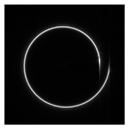 | 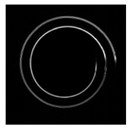 | 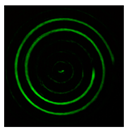 | |
| Compositional | ||||
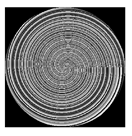 |  | 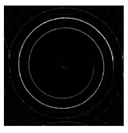 |  | |
| Element Phase λ = 532 nm, Rd = 120λ, f0 = 100λ | Distortion of the Total Intensity of the Components Electric Field in Different Planes (x, y = ∈ [−120λ, 120λ]) | |||
|---|---|---|---|---|
| z = 100λ | z = 110λ | z = 120λ | z = 130λ | |
| f1 = 100λ, p = 0 | modeling | |||
 |  | 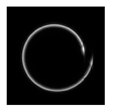 |  |  |
| experimental | ||||
 | 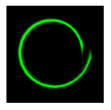 | 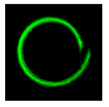 |  | |
| f1 = 110λ, p = −10 | modeling | |||
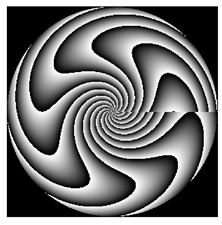 | 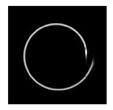 |  |  | 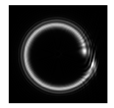 |
| experimental | ||||
 | 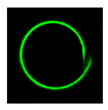 | 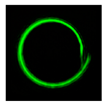 | 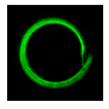 | |
| f1 = 120λ, p = −20 | modeling | |||
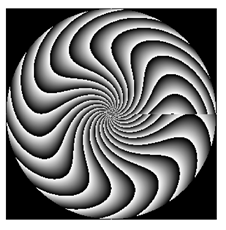 | 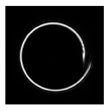 | 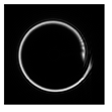 | 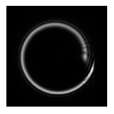 | 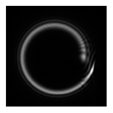 |
| experimental | ||||
 | 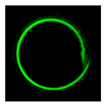 | 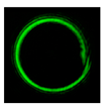 | 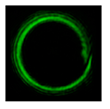 | |
| f1 = 150λ, p = −50 | modeling | |||
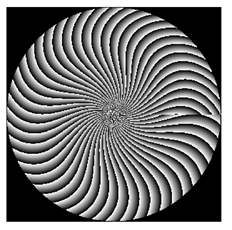 | 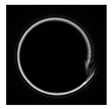 |  |  | 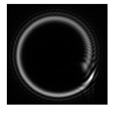 |
| experimental | ||||
 |  |  |  | |
| Element Phase λ = 532 nm, Rd = 1.5 mm, r0 = 1 mm, r1 = 1.25 mm | Distortion of the Total Intensity of the Components Electric Field in Different Planes (x, y = ∈ [–1.5 mm, 1.5 mm]) | ||
|---|---|---|---|
| z = 100 mm | z = 150 mm | z = 200 mm | |
f0 = 100 mm, f1 = 150 mm | modeling | ||
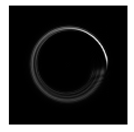 |  | 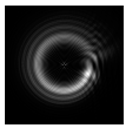 | |
| experimental | |||
 |  |  | |
f0 = 100 mm, f1 = 200 mm | modeling | ||
 |  | 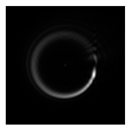 | |
| experimental | |||
 |  |  | |
Publisher’s Note: MDPI stays neutral with regard to jurisdictional claims in published maps and institutional affiliations. |
© 2021 by the authors. Licensee MDPI, Basel, Switzerland. This article is an open access article distributed under the terms and conditions of the Creative Commons Attribution (CC BY) license (http://creativecommons.org/licenses/by/4.0/).
Share and Cite
Soifer, V.A.; Kharitonov, S.I.; Khonina, S.N.; Strelkov, Y.S.; Porfirev, A.P. Spiral Caustics of Vortex Beams. Photonics 2021, 8, 24. https://doi.org/10.3390/photonics8010024
Soifer VA, Kharitonov SI, Khonina SN, Strelkov YS, Porfirev AP. Spiral Caustics of Vortex Beams. Photonics. 2021; 8(1):24. https://doi.org/10.3390/photonics8010024
Chicago/Turabian StyleSoifer, Viktor A., Sergey I. Kharitonov, Svetlana N. Khonina, Yurii S. Strelkov, and Alexey P. Porfirev. 2021. "Spiral Caustics of Vortex Beams" Photonics 8, no. 1: 24. https://doi.org/10.3390/photonics8010024
APA StyleSoifer, V. A., Kharitonov, S. I., Khonina, S. N., Strelkov, Y. S., & Porfirev, A. P. (2021). Spiral Caustics of Vortex Beams. Photonics, 8(1), 24. https://doi.org/10.3390/photonics8010024





